We were in Singapore for 8 hours before heading north into the Malacca Strait. I had been on the ship for the previous two weeks on a South East Asia Discovery. This was my fourth cruise in a year, all of which were booked 30 days or less from departure due to discounted fares. I did not have time to plan and research all the destinations, so many I learned about once I was onboard the ship. There was a time when I was not sure that I would ever cruise, but I have found it a great way to see many places that I may have never visited as they are in remote areas and too expensive to add to an itinerary. In the large cities where we docked at a port 1 to 2 hours away, the drive allowed us to see life outside the cities.
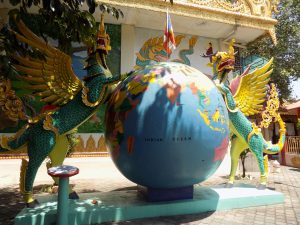
We visited four ports in Malaysia during these two weeks and our first stop was Malacca. We anchored offshore and took tender boats to the dock. Walking around the town looking for Dutch Square, I wandered through the gardens at the Melaka Sultanate Palace. Close by was the Porta de Santiago, the remains of a gate to the A’Famosa, a Portuguese fortress built in 1511. Behind the fortress was a set of stairs up to St Paul’s Church built by the Portuguese in 1521. From St Paul’s Hill, I looked down and discovered what I had been searching for all morning! Dutch Square was on the other side and I walked down to see the iconic red buildings and windmill. The Dutch defeated the Portuguese in 1641 and ruled until they traded the colony to the British in 1824. I took a leisurely walk along the Melaka river with shops and restaurants to return to the tender dock for transport back out to the ship.
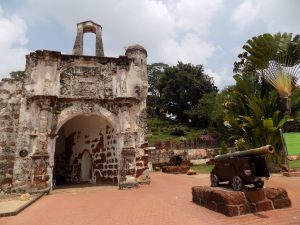
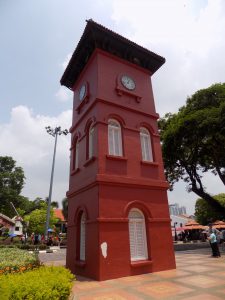
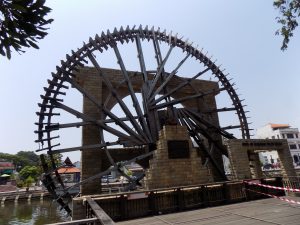
The next day we docked in Penang and were able to walk off the ship right into Georgetown. I was with a friend and we hired a taxi driver to take us on 2 hour tour to see some of the local sights. Our first adventure was Snake Temple with live poisonous snakes coiled around trees and lazing in the smoke of incense. We went on to the Thai Buddhist Temple with one of the largest reclining Buddha’s in the world at 33 metres (108 feet) long. Across the street is the Dhammikarama Burmese Temple built in 1803 with a standing Buddha. We then had a quick stop at the Botanical Gardens and drove through little India. After returning to the ship dock, I spent a little time wandering around Georgetown on my own.
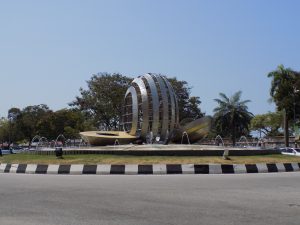
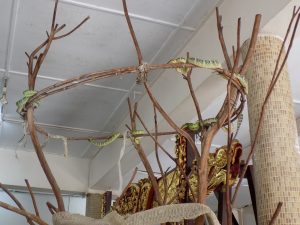
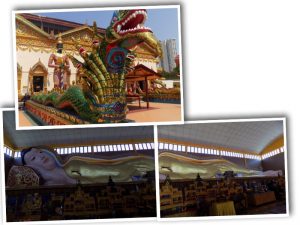
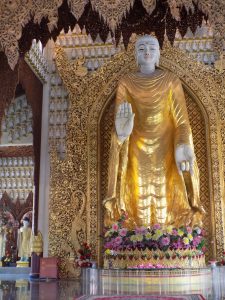
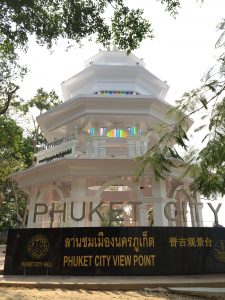 Continuing north, we arrived at the lovely island of Phuket in Thailand. We hired a taxi and he drove us up to Phuket City View Point with a nice panorama of the city and bay. We were then given a few hours in old town Phuket to explore. We saw the Hai Leng Ong Statue (Golden Dragon Monument), and then I spent a little time in the ‘Since 1892 Cafe’, enjoying a great iced Thai green tea with wifi while my friends shopped.
Continuing north, we arrived at the lovely island of Phuket in Thailand. We hired a taxi and he drove us up to Phuket City View Point with a nice panorama of the city and bay. We were then given a few hours in old town Phuket to explore. We saw the Hai Leng Ong Statue (Golden Dragon Monument), and then I spent a little time in the ‘Since 1892 Cafe’, enjoying a great iced Thai green tea with wifi while my friends shopped.
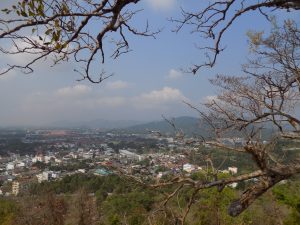
After a day at sea, we arrived before sunrise at the port of Thilawa in Myanmar (Burma). The country’s name change from Burma to Myanmar by the current government is still a controversy and both names continue being used. The port is about a 1.5 hour drive south of Yangon (Rangoon is the British name). We were in port for 3 nights and could see the raising and lowering of tides in the Yangon River each day. After 50 years of military rule with limited outside access or communication, the country was recently open to tourism with democratic reforms and elections in 2010. The locals in this Buddhist country were genuinely kind and very accommodating. I loved seeing business men dressed in the traditional longyi and white collar western shirts. Wikipedia defines a longyi as: ‘a sheet of cloth approximately 2 metres (6.6 feet) long and 80 centimetres (2.6 feet) wide, sewn into a cylindrical shape and worn around the waist. It is held in place by folding fabric over without a knot’.
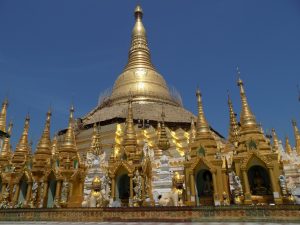
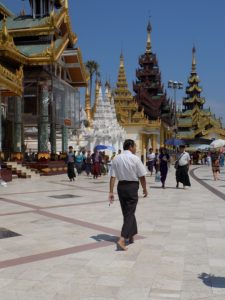
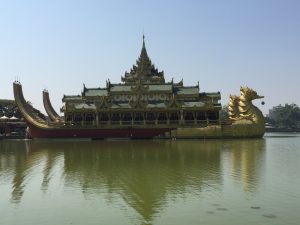
The first day we hired a taxi and made the 2 hour drive into Yangon from the port. Our driver showed us Kandawgyi Lake, Schwedagon Pagoda and the must see Scott Market. The Shwedagon Pagoda, believed to be the earliest pagoda of the Gautama Buddha Era was built more than 2500 years ago, the exact date is not recorded. Strands of the Buddha’s hair are believed to be enshrined here. It’s located on top of Singuttara Hill and visible from all over the city. The golden stupa (spire) is 99 meters (326 feet) high and is topped with thousands of diamonds (the largest is over 70 carats), rubies and other precious stones. It is tradition to walk around the pagoda clockwise and find the day of the week you were born. Here you can pray, light a candle or pour water over the shrine of that day. Our final stop where we had a couple hours to explore was Scott Market which is 70 years old with more than 2000 stalls and is the largest collection of Myanmar handicrafts in one place. Haggling is expected! The second day I was on my own and took a shuttle into Yangon. I went to the Independence Monument in Maha Bandula Park, saw the Sule Pagoda from a distance and visited the famous Strand Hotel, opened in 1901. I truly enjoyed this country and would love to return and see much more. The next morning, our departure took 3 hours as we had to move away from the dock and anchor in the middle of the Yangon River to wait for high tide before we could sail down to the Andaman Sea.
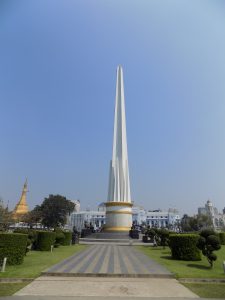
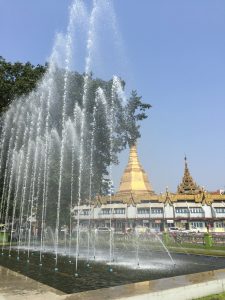
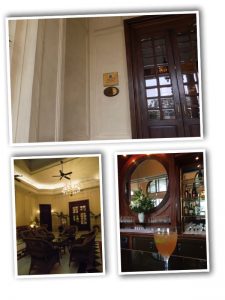
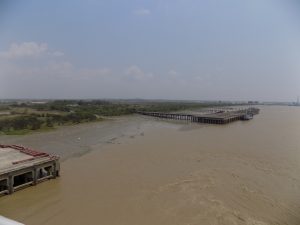
Sailing south for two days and back into the Malacca Strait, we docked at Porto Malai on the island of Langkawi in Malaysia. I went on an excursion to the second highest peak, Mount Mat Cincang, at 709 meters (2326 feet). A cable car takes you to the highest point with beautiful views of the surrounding sea, islands and mountains. At low tide, 104 islands are visible but only 99 islands can be seen at high tide. Before heading back to the ship we toured the Rice Garden and Museum showing the history and process of rice cultivation in Malaysia.
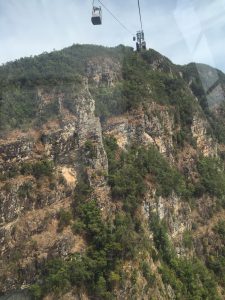
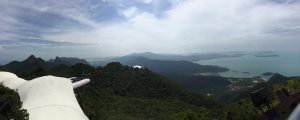
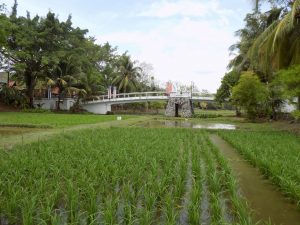
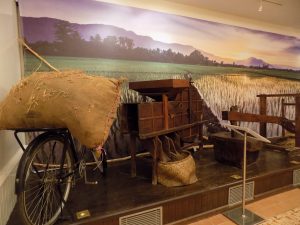
The next day, we docket at Port Klang, about an hour southwest of Kuala Lumpur called ‘The Garden City of Light’. We shared a taxi with other passengers into KL, a commonly used name, for a bit of sightseeing. We started at the KL tower, completed in 1996 and at 421 meters (1381 feet) is the sixth tallest telecommunications tower in the world. The observation Deck at 276 meters above ground has 360 degree views of the city and surrounding Bukit Nanas Forest Reserve. We then headed over to the historic Central Market, set up in the traditional stall fashion which was very common in the 1800s. While my fellow passengers shopped, I took a stroll around the local streets and China Town. We then made a quick stop at the base of Petronas Towers for photos. The Petronas Twin Towers were completed in 1998 and are 452 meters (1483 feet) high. Before heading back to the ship we went to Merdeka Square, where the ceremony for independence with the lowering of the Union flag of Britain and raising of the Malaysian flag took place in 1957. The open green field was called a Padang and used for cricket under British rule. From here is a lovely view of Sultan Abdul Samad Building, KL Tower and Petronas Towers.
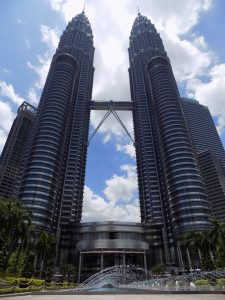
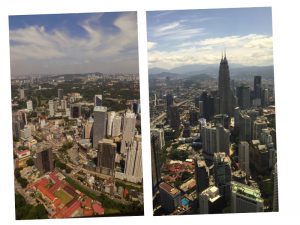
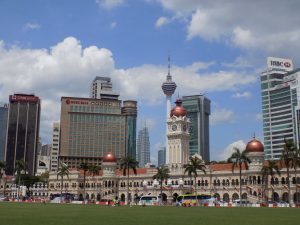
The following afternoon with thunder, lightning and heavy clouds we slowly sailed into Singapore. This city is all about order and efficiency, very clean and safe. We had one day and two nights here. Our one full day was Sunday and it was the state funeral for Lee Kuan Yew, considered the founding father of modern Singapore. He had died the previous Monday at 91 years old. Many lined the streets and were watching the procession on wide screen TVs throughout the city. There was a nationwide minute of silence at 4pm with sirens announcing the start and end. As if to join the mourners, it poured rain most of the day. As the heavy rain began to let up in the afternoon, I took the metro to Gardens by the Bay and Marina Sands Hotel. As it was still raining a bit, I chose the indoor conservatories at Gardens by the Bay: Flower Dome and Cloud Forest. The Flower Dome has beautifully displayed flowers and plants from semi-arid or Mediterranean climates. The Cloud Forest has flowers and plants from tropical highlands, a waterfall and an elevated walking platform. Both were wonderful and I walked back through the outside gardens to the Marina Sands Hotel. I went up to the SkyPark Observation Deck with beautiful views of the city as the sun started to come out. I did not get an opportunity to ride the Singapore Flyer (world’s largest observation wheel), but loved seeing it! I also did not get to visit the Raffles Hotel to have a Singapore sling at the Long Bar where it was invented in 1915. These are a couple of things that I will need to come back and see!
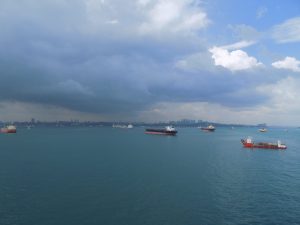
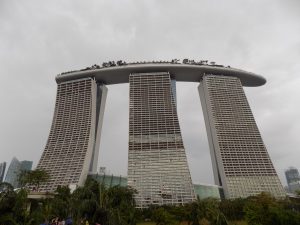
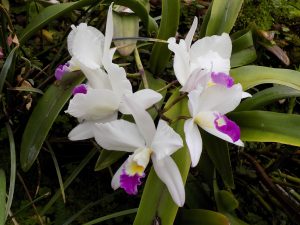
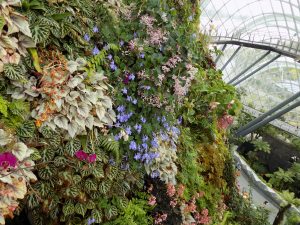
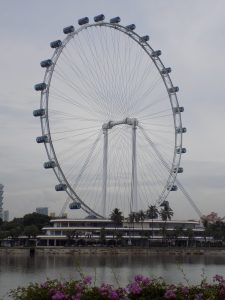
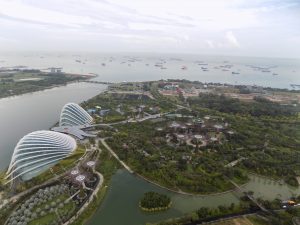
This was my first visit to South East Asia and I would have liked more time to explore, but these 28 days gave me an opportunity to get a glimpse of 7 countries. I enjoyed getting to know this part of the world and the long sail away from many of the ports allowed time for reflection.